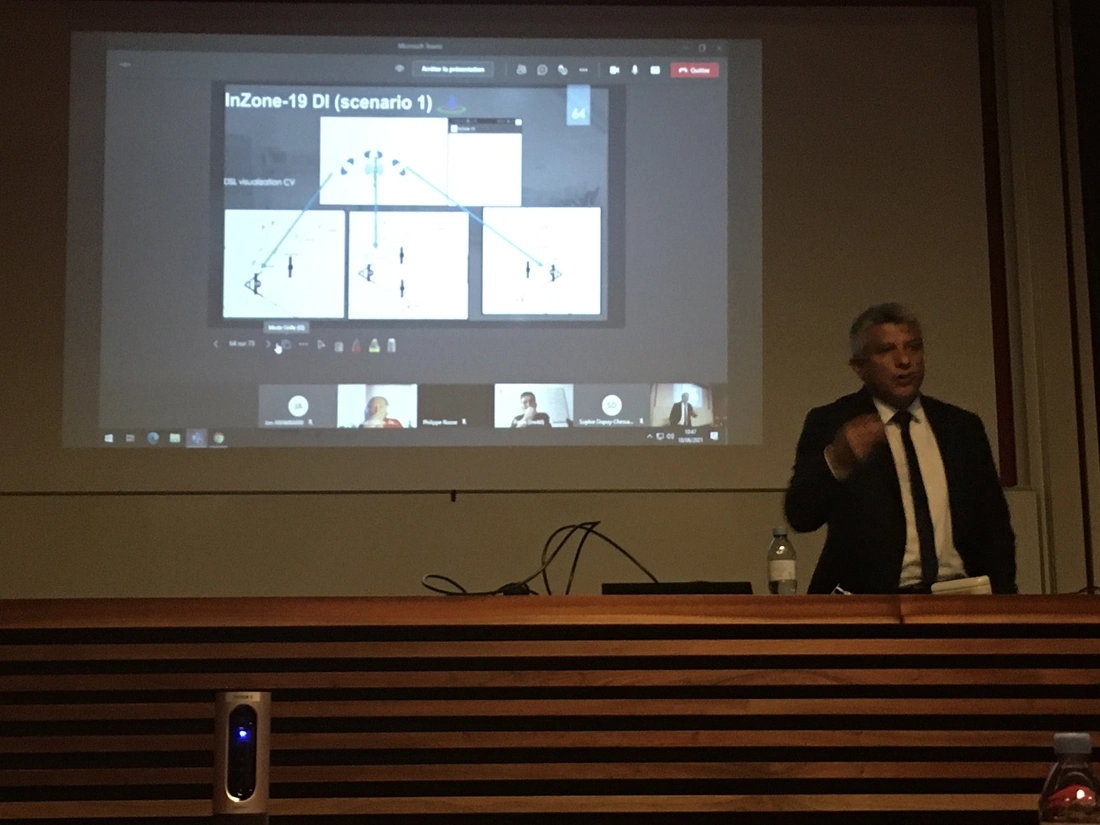Formations | Recherche
Félicitations à Paulo César Pérez Daza pour l'obtention du grade de Docteur en Informatique. Cette thèse a été menée en co-tutelle entre l’Université de Pau et des Pays de l’Adour et l’Université Simon Bolivar au Venezuela.
Sujet
Proxemic Interactions with Mobile Devices
Jury
Pr Sophie Dupuy-Chessa Université Grenoble Alpe, France (Rapporteuse)
Pr Xavier Le Pallec Université de Lille, France (Rapporteur)
Dr HDR Philippe Rosse Université de Pau et des Pays de l’Adour, France (Directeur)
Pr Nadine Couture ESTIA Institute of Technology, France (Co-directrice)
Pr Yudith Cardinale Université Simon Bolivar, Venezuela (Co-directrice)
Pr Emmanuel Dubois Université de Toulouse, France (Examinateur)
Dr HDR Dalmau Marc Université de Pau et des Pays de l’Adour, France (Examinateur)
Ing. Dominique Masson DEV 1.0, France (Invité)
Résumé
Smart environments are currently overpowering traditional Human-Computer Interaction (HCI) approaches for people’s everyday life applications. Proxemic interaction is an emerging area for improving HCI experiences in such environments, causing the so-called proxemic environments to emerge. Proxemic interactions establish how the five dimensions (i.e., Distance, Identity, Location, Movement, and Orientation – DILMO) can be used to implement interactions between people and digital devices. Current studies in this area are focused on developing proxemic applications with a specific task and toolkits that allow developers to obtain DILMO information from a wide range of sensors. However, there exists a notable lack of general approaches capable of supporting the whole implementation process from the modelling of proxemic environments to represent general proxemics behaviors and finalizing with the development of mobile applications. To help the integration of proxemic capabilities in HCI, we propose an approach for modelling proxemic environments based on a graphical Domain-Specific Language (DSL). The DSL allows designers to express proxemic interactions for modelling proxemic environments and supports the development process.
We also provide an API in a framework for mobile devices based on Android operating system. This API implements high-level primitives (DILMO) permitting to provide proxemic interactions on widespread mobile devices. We have developed an API that is feasible for developing proxemic mobile applications. We applied the proxemic interactions in order to develop an architecture that can support mobile applications in the health sector. We propose interpersonal distances and proxemic dimensions (i.e., Distance, Identity, and Orientation - DIMO) to implement HCI with mobile devices that encourage touchless interactions. Our goal was to promote mobile apps’ development with proxemic HCI, supported in a proposed architecture, to stop the spreading of nosocomial infection. To illustrate our proposal’s usability, we developed two prototypes of applications for mobile devices as a proof-of-concept, using several combinations of proxemic DILMO dimensions to model proxemics HCI that allowed flexible interaction between people and mobile devices.
Mots-clés
A mobile application, Proxemic interactions, Graphical DSL, API toolkit, social distances, control video/musical player.
Laboratoires d’accueil
LIUPPA et ESTIA-Recherche
École doctorale
École Doctorale des Sciences Exactes et leurs Applications, Pau, France
Escuela de doctorado en Ingeniería, Caracas, Venezuela
Soutiens
| Les travaux de recherche menés ont été cofinancés par la Région Nouvelle-Aquitaine et la Communauté d’Agglomération Pays Basque. |

